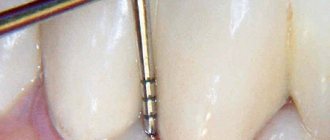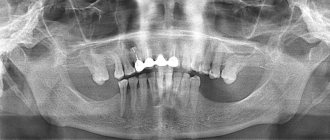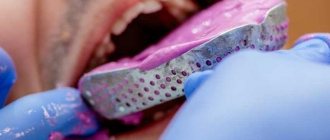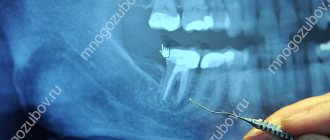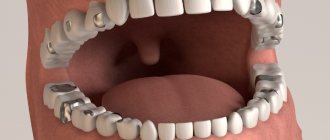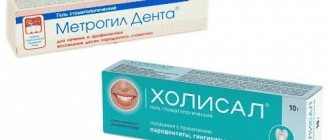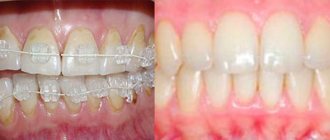Complications after chemotherapy in one or another combination of symptoms of varying severity are mandatory with each cycle, therefore clinical studies take into account the effectiveness of the chemotherapy, the spectrum and frequency of adverse reactions. In antitumor therapy, a balance between effectiveness and toxicity is impossible, which is due to the indiscriminate action of drugs.
- Types of complications after chemotherapy
- Feeling after chemotherapy
- Degree of complications
- How long do side effects last?
- Examination after chemotherapy
- What to do after chemotherapy?
- Treatment of complications
- Pregnancy after chemotherapy
- Sex after chemotherapy
- Periods after chemotherapy
- Life expectancy after chemotherapy
- Disability after chemotherapy
- Prevention of complications after chemotherapy
Types of complications after chemotherapy
Chemotherapy (CT) harms every cell of the body; only healthy cells that have passed a full stage of development are more resistant to cytostatics. Malignant cells grow faster, neglecting their own structure; their main task is rapid reproduction. The first contact of a malignant tumor with an anticancer drug is fatal to its cells, but then a defense system against chemotherapy is created, which allows it to survive and invade new areas.
Rapidly maturing normal cells, such as leukocytes and platelets, reproductive and mucous membrane-forming cells, are also not resistant to chemotherapy, because their populations are not programmed for long-term existence.
According to the mechanism of development, complications after chemotherapy are divided into 4 large groups:
- caused by the action of the drug , including local damage and systemic effects specific to a particular cytostatic and characteristic of all drugs. An example of a local reaction is cystitis after irinotecan, systemic specific damage is pneumotitis after bleomycin, nonspecific is leukopenia;
- caused by immune disorders , including allergic and autoimmune processes. For example, a systemic allergy up to anaphylaxis develops to taxanes, a general decrease in immune defense is manifested by the ease of development of inflammatory diseases and activation of the herpes virus;
- intolerance to chemotherapy , so the absence of a cellular enzyme leads to unusually high toxicity of fluorouracil;
- Unfavorable drug interactions are especially pronounced with combined chemotherapy, since taxanes with cisplatin doubly harm the nervous system.
Complications occur at different times:
- acute - during the administration of a cytostatic drug and on the first day after chemotherapy;
- the next ones occur on the second day after the cycle;
- delayed ones develop after 7 days;
- distant ones - at least in a month and can appear in years.
From the digestive system
Mucosal side effects have given chemotherapy a bad name:
- nausea and vomiting in the near future;
- delayed mucositis - delayed destruction of the mucous membranes of the oral cavity (stomatitis), esophagus (esophagitis), stomach (gastritis), small intestine (enteritis), large intestine (colitis) and rectum (rectitis);
- hepatotoxicity will appear in the long term, after several courses of therapy.
Nausea, and especially vomiting, can be prevented and reduced. Mucositis is varied in severity and localization, it begins with inflammation and swelling, then areas of necrosis form from microscopic to visible. With stomatitis, it is impossible to drink or eat, esophagitis and gastritis are manifested by heartburn, intestinal damage is caused by stool disorders, pain, nausea and anorexia are always a concern.
Toxic liver damage develops gradually, when only the biochemistry of the blood changes, the liver tissue itself does not hurt, the pain is caused by stretching of the capsule as the liver enlarges. In severe cases, jaundice with fever and intoxication is possible, but the most dangerous thing is liver failure, acute or after a few years as a result of liver fibrosis.
From the immune system
The effect of chemotherapy on the immune system is most often manifested by the ease of infection, when after a course endless colds “cling”, fungi that harmlessly live on the mucous membranes are activated, leading to lingering thrush. An extreme case of immune suppression is pneumonia.
Immunotherapy with monoclonal antibodies excessively activates the defense system, leading to autoimmune manifestations. Immune-mediated toxicity involves multiple organ systems, manifesting as autoimmune hepatitis, pneumonitis, skin and vascular lesions, usually with intoxication, fever and deterioration.
From the circulatory system
A feature of most chemotherapy drugs is irritation of the mucous membrane of blood vessels, which is reduced by changing the technology of intravenous administration. The veins of the upper extremities, which suffer contact chemical burns, suffer to a greater extent from cytostatics.
Some medications have to be administered either very quickly - as a bolus, others, on the contrary, very slowly by drip, spending from a couple of hours to several days per administration. Clinically, vascular damage is manifested by phlebitis: pain and internal inflammation, swelling and redness of the skin over the vessel. The inflamed mucosa thickens, slowing blood flow leads to thrombosis. After repeated administration of a cytostatic, the lumen of the vein narrows and can be completely obliterated.
A special type of complication of chemotherapy, extravasation is the rupture of a vessel with the release of chemotherapy into the surrounding tissue. This is not due to the nurse’s clumsiness; the fragile vascular wall, which has repeatedly survived a cytostatic burn, is exfoliating.
From the musculoskeletal system
The skeleton suffers from long-term hormonal therapy; necrosis of the lower jaw is specific to bisphosphonates. Chemotherapy damages the lining of the joints, similar to mucositis, which results in inflammation with swelling, pain and limited movement. Immune and targeted drugs lead to autoimmune arthritis.
Damage to the muscular skeleton by cytostatics is mediated by neurotoxicity, when muscle cramps and pain are caused by damage to the nerves, but not to the muscle tissue itself.
From the nervous system
The neurotoxicity of antitumor therapy deserves a separate discussion. The side effect is inherent in several groups of cytostatics and manifests itself as damage to peripheral nerves and, rarely, to the brain and spinal cord. In the vast majority, sensitivity is impaired, and movements are less affected.
Critical doses of drugs associated with the development of neurotoxicity have been determined; the time of development of damage is variable and may appear several months after completion of treatment. The peculiarity is the duration of clinical symptoms; in some patients, complete recovery does not occur.
Target organs
Some drugs have an affinity for certain cells. On the one hand, this is a useful targeting property that allows targeted killing of malignant cells. Treatment regimens for squamous cell skin cancer include bleomycetin, which accumulates in the epithelium, but accumulation of drug metabolites in the pulmonary epithelium leads to “bleomycin lung” with prolonged pneumonia and pulmonary failure.
Another example of a target organ for a cytostatic is damage to the renal tubules by cisplatin, leading to the development of renal failure. Anthracyclines work similarly, selectively damaging myocardial cells.
The target organ for immuno-oncological drugs is lymphocytes; their activation helps fight melanoma and lung cancer, but on the other hand they cause specific immunological side effects described above.
Appearance
All cytostatics “spoil” not only the mucous membranes, but also the skin, making it pale and sluggish. Skin appendages - hair and nails - suffer; they grow poorly, are dull and flaking. Hair falls out and thins.
Most drugs do not cause total baldness - alopecia, but partial alopecia with fluffy hairs from internal weakness and nests of bald spots traumatizes a woman no less than a completely bald head. Subsequently, the hair changes color and structure - it thickens and curls.
Immuno-oncological drugs cause specific inflammation of the skin, followed by profuse peeling of the feet and palms or widespread pimples - acne. All manifestations disappear without a trace - no scars remain, but several months of moral suffering pass before complete recovery.
Mucositis – what is it?
Mucositis is an inflammation of the tissues of the oral cavity and throat mucosa. The main reasons are a weakened immune system caused by various conditions or chemotherapy, implant rejection, which causes inflammation of the soft tissue. Possible ulceration.
Peri-implant mucositis is a lesion of the gum tissue surrounding the implant. The tissues swell and bleed when pressed. This inflammation of the mucous membrane is characterized by clinical signs close to gingivitis, there is no bone loss.
Mucositis and peri-implantitis are similar in symptoms and course to classic periodontal diseases with natural dentition. The first disease is characterized by inflammation of soft tissues, the second is additionally accompanied by resorption (progressive loss) of bone mass.
Feeling after chemotherapy
How you feel after chemotherapy depends not only on the combination of drugs used and their doses, but also on the initial state of health, gender (women have more complications), and psychological characteristics. It is clear that after the cycle you feel worse than before.
All cycles are tolerated differently, and adverse reactions after the first chemotherapy are not similar to the toxicity of subsequent cycles. Negative manifestations from the blood, heart muscle, kidneys and nervous system may worsen. Mucositis, on the contrary, is easier because the most sensitive layers of mucous cells have already died and strong scar tissue has formed in their place.
Well-being can be improved, it is also possible to speed up tissue restoration, and with a future course, some of the adverse reactions can be transferred to a mild degree or seriously leveled out, as they can do in our clinic.
Degree of complications
Side effects are classified according to severity as follows:
- 0 degree - no manifestations;
- 1st degree - minor manifestations that do not change the quality of life;
- Grade 2 - moderate symptoms that force the patient to limit activity; it is difficult to cope with them without treatment;
- Grade 3 - severe manifestations requiring hospitalization;
- Grade 4 - life-threatening requires emergency treatment measures.
For each cytostatic drug, grade 3-4 toxicity is calculated as a percentage, but the use of drug combinations can lead to unplanned consequences.
Treatment of peri-implantitis
If you have dental implants installed and there are signs of gum inflammation, do not use traditional treatment methods or advice from friends. Contact a specialist for advice. Treatment of peri-implantitis should be aimed, first of all, at eliminating the infectious process in the tissues around the implant, closing the gum pocket, stopping bleeding and preventing further bone loss. If necessary, the bone level is restored using bone grafting.
The first stage of treatment for reimplantitis is professional hygiene, during which soft and hard dental plaque is removed from the implant, dentures and teeth. Ultrasonic cleaning devices are used to remove subgingival plaque, which do not damage the implant, abutment, crowns and surrounding tissue.
When treating re-implantitis, surgical intervention may be required - opening the gum area in the area of the implant, which gives the doctor the opportunity to see the surface of the implant for more thorough cleaning, as well as bone grafting in case of bone resorption (loss).
Family Dentistry has experienced periodontists who can help with periodontal disease. Treatment is carried out using the most advanced methods using modern equipment. Periodontist surgeon I.I. Yakimenko uses a dental laser, which makes surgery painless and bloodless. Periodontist Kolesnikova N.A. uses a dental laser to sterilize periodontal pockets and speed up tissue restoration. Our doctors’ extensive experience of successful work helps us cope with any, even very complex cases.
How long do side effects last?
The duration of toxic effects depends on the rate of restoration of damaged tissue, the standard time is 21 days, during which time the intestinal mucosa and bone marrow are completely restored. A week is enough to restore leukocytes and platelets; red blood cells will require more than 4 months.
Mucositis may last for a couple of weeks, but by the end of the first week the symptoms decrease.
Restoration of the liver, kidneys, and nervous system can take up to a year without any guarantee of 100% repair.
Hair begins to grow at the beginning of the next cycle, nails are completely replaced after six months.
Examination after chemotherapy
Diagnosis of complications of chemotherapy is carried out during examination and by blood tests - biochemical and clinical with leukocytes and platelets.
A blood test will show the true degree of inhibition of hematopoiesis, so it is taken often; after the indicators have been restored, it is enough to do it before the next cycle.
Mucositis will require additional examination only in grades 3-4. Damage to the liver and kidneys is initially detected by blood biochemistry.
If there are symptoms of trouble from the cardiovascular system, an immediate examination with ECG, echocardiography and specific cardiac markers in the blood is necessary.
Peri-implantitis – “Sword of Damocles” for an implant
Implantologists are sounding the alarm: the number of patients with complications after dental implantation has increased significantly over the past five years. Doctors and scientists say that peri-implantitis is to blame - this is inflammation of the soft and bone tissues that come into contact with the implant.
The main danger of the disease is that the bone gradually becomes thinner, decreases in volume, and the titanium implant no longer holds in the jaw. The most negative result is the loss of the implant. The insidiousness of the pathology lies in the fact that you do not know when peri-implantitis will appear: a month after implantation of the metal root or years later.
Symptoms of peri-implantitis
Peri-implantitis is not a hidden disease: the patient himself can understand that “something has gone wrong” and sound the alarm.
What symptoms are accompanied by peri-implantitis:
- the gums near the implant are inflamed: they bleed, swell, turn blue or red;
- the jawbone becomes thinner: visible when examining the oral cavity or on an x-ray;
- the depth of the gum pocket increases: at least 3–5 mm, the abutment is noticeable, the implant is slightly wobbly;
- Pus accumulates in the gum pockets: a fistula appears at the site of inflammation.
In the first year after implantation, a decrease in bone tissue by 1–1.5 mm is normal. In the future - no more than 0.2 mm per year. Resorption above these values is considered a pathology and threatens implant rejection.
What to do after chemotherapy?
After the end of chemotherapy, you need to move on with your life, without confining yourself to the disease and without plunging into past experiences. Further observation may require physical and psychological rehabilitation.
Active rest is a good continuation of recovery after chemotherapy, you can return to work, the main thing is to get away from the unpleasant memories of the hardships of treatment.
In our clinic, each patient is given an individual observation plan with a schedule of examinations, of which the patient will be notified by phone, offering a convenient time for the visit. Observation after treatment of a malignant disease is our concern; the patient should continue to live without unnecessary problems.
Treatment of complications
Traditional treatment of complications is not always possible. Vomiting is well controlled, medications cope well with leukopenia, with a high probability of 3-4 degree inhibition of the white blood sprout and before the appearance of leukopenia, the introduction of colony-stimulating factors begins in advance.
There are no specific drugs to relieve the neurotoxicity of chemotherapy, so there is an urgent need for physical therapy and various neurorehabilitation techniques.
In case of complications from the gastrointestinal tract, mainly mucous membranes and the liver, only symptomatic treatment is possible, which is why the professionalism of the medical team and the clinic’s capabilities in organizing intensive care and conducting auxiliary rehabilitation treatment, and selecting adequate nutrition are so important.
Pregnancy after chemotherapy
Cytostatic therapy does not promote reproduction and pregnancy is practically excluded during treatment. A few studies have shown that pregnancy is not dangerous for those cured of a malignant tumor, but remission of cancer is not exactly the right time for procreation. After completion of chemotherapy, pregnancy should not only be planned, but also thoughtful; it should be remembered that cancer is a chronic disease; a complete cure can be expected after a decade.
Taking tamoxifen may contribute to unplanned pregnancy, so contraception is recommended for young women. An adequate method of contraception will be suggested by a gynecologist specializing in oncological pathology.
Prevention recommendations
Following simple rules of prevention helps to improve the patient’s well-being. By following simple recommendations, you can reduce painful symptoms caused by inflammation and increase the effectiveness of treatment.
Oral care rules
- You need to brush your teeth with a soft-bristled toothbrush, which is washed with a disinfectant ;
- brushing your teeth after meals and before bed helps stop the development of pathogenic microorganisms in the mouth;
- do not use removable dentures during therapy to prevent further aggravation of the disease;
- rinse with solutions with antiseptic properties;
- use lip balms to prevent lip chapping.
Successful fight against the disease depends on the amount of fluid you drink - drinking at least two liters a day will help you avoid dehydration and speed up the elimination of toxins.
What foods to eat
Nutrition during the treatment of mucositis involves eliminating damage to the affected mucosa, for which it is recommended:
- give up alcohol;
- exclude too hot, sour, spicy foods and drinks;
- You need to include protein-containing and low-calorie foods in your diet.
- Complete restoration of the dentition in just 4 days!
more detailsRoott Pterygoid Implants Sinus lift is no longer needed!
more details
Once and for life! Express implantation in 4 days with a permanent ReSmile prosthesis
more details
All-on-4, All-on-6, ReSmile, Zygomatic implantation We use all modern methods of dentition restoration
more details
Sex after chemotherapy
There are no obstacles to sexual relations if the toxic reactions of chemotherapy are stopped. If thrush and other unfavorable symptoms from the mucous membrane of the genital tract are a legacy of antitumor treatment in a woman, you should consult a gynecologist about the prospects of returning to sexual activity.
Chemotherapy has an adverse effect on potency, but over time, erectile dysfunction should go away, but it is better to discuss the problems with an andrologist-urologist; today there are enough products available to relieve temporary problems in intimate life.
Life expectancy after chemotherapy
The life expectancy of a cancer patient is determined by the course of the malignant process. Despite the persistent myth about the high mortality rate “from chemotherapy,” a negligible number of patients die from toxicity—thousandths of a percent. The vast majority of cancer patients die from disease progression, when the volume of tumor masses is no longer compatible with the continuation of human life.
Observational studies have shown a higher incidence of cardiovascular disease and the likelihood of developing a second malignancy several decades after cancer treatment, but there is no evidence yet that anticancer therapy shortens the life of those cured of a primary malignancy.
Mucositis: a modern view of the problem
Oral Hygiene Clinical studies have clearly shown that biofilm accumulation is associated with the development of peri-implantation mucositis around integrated implants. Ferreira et al. reported on 212 patients with three different oral implant systems who were diagnosed with mucositis. All implants functioned for a period ranging from 6 months to 5 years. A modified plaque index was recorded, and overall oral hygiene was defined as good (mean score ≤1), low (mean score >1 and <2), and very low (mean score ≥2). The authors reported a significant association between plaque scores and mucositis. The prevalence of mucositis was reported to be 64.6%. Results from another study involving 218 patients with 999 implants in place over a period of 9 to 14 years showed that plaque levels were significantly associated with the presence of mucositis in patients. Regular biofilm monitoring should be considered the standard of care and treatment in the presence of preimplantation mucositis, either by the patient alone or by a medical specialist. Presence or absence of maintenance implant therapy (SIT) Among patients not adherent to regular maintenance therapy (SIT), mucositis was reported to be a common problem in 48% of cases during a follow-up period of 9 to 14 years. Conversely, results from another cohort study with 5-year follow-up showed that implants placed in patients with controlled periodontal conditions and compliance with the SIT program had a 20% prevalence of mucositis. In this study, upon diagnosis of periplantation mucositis, all but one of the implants were successfully treated according to an anti-infection protocol. Results from a 3-month randomized, placebo-controlled clinical trial showed that mechanical debridement with or without topical chlorhexidine gel combined with optimal biofilm self-control completely eliminated bleeding in 38% of implants diagnosed with mucositis in a study. In partially edentulous patients with mucositis, combined with lack of adherence to SIT, a higher percentage of cases result in peri-implantitis during 5-year follow-up. The results of this study showed an incidence of peri-implantitis of 18.0% in the SIT group and 43.9% in the non-SIT group, respectively, during a 5-year follow-up. Regression analysis showed that the absence of SIT in the overall patient population was significantly associated with the onset of peri-implantitis with an odds ratio of 5.92. Therefore, therapy for peri-implantation mucositis should be considered prevention of peri-implantitis. Materials and surface characteristics of implant components There is little evidence of the influence of implant surface roughness on the incidence of mucositis in the implant site. A 12-month comparative analysis of patients with treated titanium abutments (Ra = 0.2 µm) and polished ceramic abutments (Ra = 0.06 µm) showed that further reduction in surface roughness had no effect on probing bleeding rates ( BOP). A study in humans has established a relationship between changing abutment and abutment surface roughness and the early inflammatory response of the peri-implant mucosa. Although a statistically significant difference was observed between patients in terms of biofilm accumulation on the abutment surface and inflammatory cell accumulation, no association was observed between the inflammatory response and abutment surface roughness at the 4-week follow-up. Comparing titanium implants and abutments, it was found that zirconium dioxide (ZrO2) implants and abutments have more beneficial properties in terms of biocompatibility. It should be noted, however, that there are no clinically significant differences in BOP values between these materials, and in some cases higher BOP have been reported for ZrO2 constructs compared to titanium abutments. Implant-supported prosthesis design The ability to remove biofilm around implant-supported prostheses plays an important role in the prevention of peri-implantitis. Implants with a supramucosal portion provide a significant reduction in probing depth after treatment of mucositis compared to those with only a submucosal portion. This finding supports previous observations of the relationship between subgingival restoration on natural teeth and periodontal inflammation and attachment loss. The results of a clinical retrospective study showed a large number of implants diagnosed with peri-implantitis due to insufficient biofilm control or lack of oral hygiene access, while peri-implantitis was rarely found in sites where biofilm control and hygiene were not compromised. Therefore, oral hygiene instructions and recommendations should be individually tailored to patients receiving dental implant treatment because mucositis can be considered a precursor to peri-implantitis. In addition, whenever possible, the marginal edge of an implant-supported prosthesis should be placed at or above the mucosal level to facilitate access and control biofilm. Implant structures that impede access for biofilm removal should be corrected or replaced with other prostheses. Dimensions of keratinized mucosa at the implant site The influence of the size of keratinized mucosa at the implant site as an indicator of risk for the development of mucositis has been studied in several human studies. Although some studies have reported higher rates of mucositis in implant sites that have insufficient or inadequate width (less than 2 mm) of keratinized gingiva, others have found no such association. Overall, the evidence for the presence or minimum width of keratinized mucosa around implants to maintain soft tissue health and stability is somewhat controversial. In clinical situations with adequate oral hygiene, plastic surgery with soft tissues in case of their deficiency is not mandatory.
Excessive cement Excessive cement is associated with clinical signs of peri-implantation mucositis. Patients who have a single crown with excess cement show more signs of mucositis compared to those who have the same crowns without excess cement. In addition, mucositis was more prevalent in patients with cement-retained prostheses compared with those with cement-screw fixation. Therefore, to avoid excess cement, the edges of the restoration should be positioned at or above the mucosa or the restorations should be cemented to custom abutments to ensure proper removal of cement.
Disability after chemotherapy
Obtaining disability after completing radical treatment of a malignant disease is not a mandatory option. Disability, like being on sick leave, is evidence of incapacity for work, only for a longer period.
You must understand that disability is not given for the rest of your life, but only for the duration of complex therapy and subsequent recovery. A group without the right to work can be given for a year, it will be removed after a year or two if there is no relapse of the disease, or they will be assigned a “working” 3rd group.
If the patient has less than 2 years left before reaching retirement age, he can apply for an early and lifetime disability pension. Younger people have to return to work, which is very difficult in the status of a “former” disabled person. Before being examined for a disability group, you should think carefully about whether it is worth doing.
Mucositis – the best of the worst
Mucositis after implantation is also a common problem, although not as serious as peri-implantitis. This is the initial stage of implant rejection, when only soft tissues become inflamed and the bone is not affected.
How does mucositis manifest:
- erythema - redness;
- thinning of the mucosa at the site of inflammation;
- hyperplasia - swelling of the gums;
- ulcers on the inside of the cheeks and gums;
- white spots on the mucous membrane are a symptom of the death of soft tissue.
Painful sensations while eating, increased body temperature, malaise, dry mouth, and weight loss also accompany dental mucositis. The disease rarely leads to the loss of an implant, but the danger is different: with advanced mucositis, the mucous membrane in the mouth is so inflamed that the patient cannot even swallow, nutrition is only possible through a tube.
Prevention of complications after chemotherapy
The likelihood of complications is inherent in the very essence of chemotherapy; some adverse reactions can be mitigated, but toxicity cannot be prevented 100%. In practical oncology, vomiting and leukopenia are prevented; specific prevention of other adverse effects has not been developed. Oncological science suggests actively monitoring the condition and tests, and at the slightest unfavorable changes, begin to help the patient’s body cope with the least possible health losses.
The professionalism of the chemotherapist and the diagnostic and treatment capabilities of the clinic allow us to maintain the body’s defenses before and during the cycle. Our Clinic not only monitors indicators and well-being, but also offers special nutritional support, a variety of restorative procedures and methods for relieving toxicity.
Book a consultation 24 hours a day
+7+7+78
Bibliography:
- Buydenok Yu. V./ Recommendations for the treatment of the consequences of extravasation of antitumor drugs // Malignant tumors: Practical recommendations RUSSCO #3s2, 2022 (volume 8).
- Vladimirova L. Yu., Gladkov O. A., Kogonia L. M., et al. /Practical recommendations for the prevention and treatment of nausea and vomiting in cancer patients // Malignant tumors: Practical recommendations RUSSCO #3s2, 2022 (vol.

- Koroleva I. A., Bolotina L. V., Gladkov O. A., et al./ Practical recommendations for drug treatment of dermatological reactions in patients receiving antitumor drug therapy // Malignant tumors: Practical recommendations RUSSCO #3s2, 2022 (vol. 8).
- Protsenko S. A., Antimonik N. Yu., Bershtein L. M., et al. /Practical recommendations for the management of immune-mediated adverse events // Malignant tumors: Practical recommendations RUSSCO #3s2, 2022 (vol.

- Sytov A.V., Leiderman I.N., Lomidze S.V., et al. /Practical recommendations for nutritional support for cancer patients // Malignant tumors: Practical recommendations RUSSCO #3s2, 2022 (vol.

- Tkachenko P. E., Ivashkin V. T., Mayevskaya M. V. / Clinical recommendations for the correction of hepatotoxicity induced by antitumor therapy // Malignant tumors: Practical recommendations RUSSCO #3s2, 2022 (vol. 8).
Treatment of cancer patients after drug therapy for cancer
The use of drugs to stop a malignant process has many positive aspects, with the exception of one – side effects. However, they can be managed if treatment is started promptly after cancer chemotherapy.
It is prescribed by the attending physician, based on the results of the latest tests, hardware studies and the patient’s complaints. Treatment includes:
- diet;
- immunomodulators;
- symptomatic medications;
- psychological help.
Diet after cancer treatment
One of the common reactions of the body to therapy with drugs containing poisons and toxins is nausea and loss of appetite. You can’t refuse food, because it gives you strength to recover, but you’ll have to reconsider your diet.
Basic nutritional recommendations for cancer patients recovering from chemotherapy treatment:
- Eat small meals, but often. Invite your friends; having a meal with them is much more pleasant than alone.
- Include new foods in your diet (check with your doctor first).
- If you feel a metallic taste in your mouth, replace your usual cutlery with plastic ones.
Recommendations for the diet itself concern not only food, but also the preparation of various dishes:
- Steam or bake food in the oven. This way it will retain more nutrients.
- Eat more proteins - turkey, skinless chicken breast, sea fish (preferably red), fish caviar (any).
- Add dairy products - sour cream, cottage cheese, fermented baked milk, yogurt, whole milk.
- Prepare salads from greens and vegetables using sunflower, flaxseed, and olive oil.
- Introduce cheese, butter, eggs, and legumes into your diet.
- For a snack, use nuts, wheat germ, and fruit smoothies.
- For first courses, prepare cream soups and puree soups, including black bean and lentil soups.
- Freshly squeezed vegetable, fruit, and berry juices are beneficial.
- As a side dish, eat porridge - buckwheat, rolled oats, barley, rice.
A cancer patient undergoing treatment after exposure to chemotherapy needs to drink about one and a half liters of fluid per day. It is recommended to consult a doctor on this issue. If there is an accumulation of fluid in the peritoneum, lungs or pleural cavity, its amount is limited.
Immunomodulators in post-cancer treatment
Chemotherapy is extremely stressful for the human body. The bone marrow responsible for blood is most damaged. After treatment, her indicators deteriorate significantly, showing a lack of basic components - leukocytes, erythrocytes and platelets, which causes leukopenia, erythropenia, thrombocytopenia.
The lack of white blood cells in the body affects the immune system - it becomes so weak that the patient can catch any infection or virus to which he was previously immune. To correct the condition of cancer patients, treatment after chemotherapy always includes immunomodulator drugs that stimulate hematopoiesis (the process of hematopoiesis in the bone marrow):
- Derinat;
- Granocyte;
- Leucomax;
- Glutoxim;
- Lycopid;
- Galavit;
- Neupogen;
- Deoxynate.
Immunomodulatory drugs are used to improve the quality of life of patients with cancer. Their effectiveness has been proven by more than 30 years of use in cancer patients during chemotherapy and during the recovery period.
Symptomatic treatment
The first priority is to eliminate or reduce pain in cancer patients. For these purposes, analgesics and non-steroidal anti-inflammatory drugs are used. They are often combined with sedatives and tranquilizers. Painkillers are prescribed according to a scheme from weak to strong with a gradual increase in effect. If the pain is severe or the disease is advanced (inoperable stages of cancer controlled by chemotherapy), the doctor prescribes narcotic analgesics. However, such means are resorted to only as a last resort and for a short period of time (up to 3 days).
Treatment of gastrointestinal disorders
The first thing the doctor does is determine the cause of the condition. Nausea and vomiting occur not only from poisoning of the body of a cancer patient during treatment with toxic anticancer drugs. This often occurs as a result of intestinal obstruction - mechanical or dynamic (cerebral edema, hypercalcemia). If nothing serious is found, the cancer patient is prescribed Cerucal or Dexamethasone for treatment; if they are weak, Zofran, Navobane, and Osetron may be prescribed.
Constipation is one of the side effects of chemotherapy in particularly severe patients. Here, the doctor’s recommendations are exclusively individual. If there is no question of surgical treatment of constipation, step-by-step therapy is carried out:
- Cleansing or oil enema (at night).
- Orally castor or vaseline oil.
- Laxative – Guttalax, senna leaf, Bisacodyl.
Diarrhea occurs either as a functional impairment or as a neuropsychiatric complication after cancer chemotherapy. Treatment includes:
- diet;
- antidiarrheal drugs (Loperamide);
- saline solutions to replenish water-salt and electrolyte balance (Regidron);
- medications that restore intestinal microflora (Linex, Bifidumbacterin, Lactofiltrum - an enterosorbent that restores intestinal microflora);
- Enterosorbents - activated carbon, Diosmectite, Polyphepan, Polysorb and others.
If tests reveal that the diarrhea is infectious, antibiotics are prescribed to treat the condition.
Liver and kidneys
Both organs are involved in filtration, and therefore are more affected than others during cancer treatment. To restore the liver, you first need to cleanse it of harmful substances accumulated in it. For this purpose, Legalon is used, a preparation based on milk thistle seeds. After cleansing, the main task is to restore the liver cells damaged by chemotherapy, so that the organ works correctly again and begins to fulfill its direct function - to cleanse the blood of harmful substances. For treatment, dietary supplements are used - Essentiale Forte, Karsil, Flor Essence.
The kidneys are a little more complicated. Aggressive exposure to toxic/poisonous drugs can cause uric acid nephropathy and kidney failure. To restore proper kidney function, use:
- Nephrin, Canephron, Chofitol, Nephrofit.
- Collections from medicinal herbs (corn silk, kidney tea, borage and others).
If inflammatory diseases of the kidneys and urinary tract are diagnosed, antibacterial drugs are prescribed for treatment - Nitroxoline, Furadonin.
